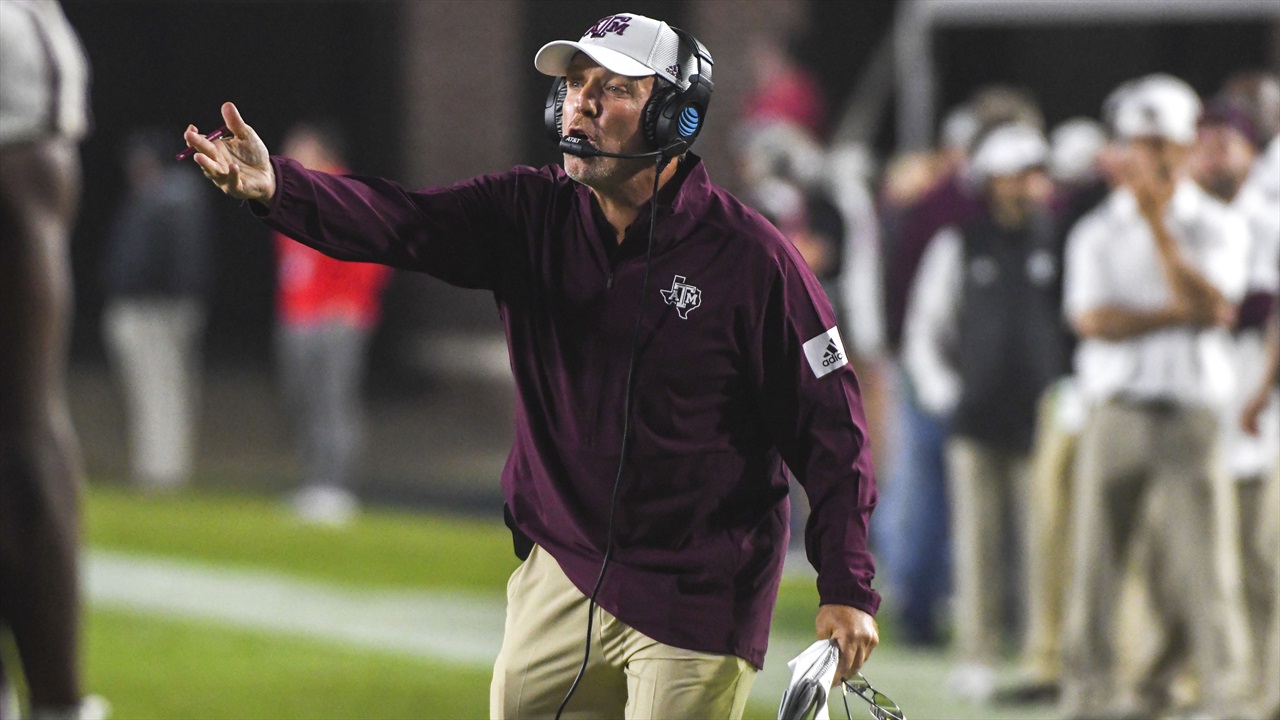If instant coffee is appealing, why are there long lines at Starbucks?
Yet, it seems there are those — especially in college football national media — that think quality should be instantaneous.
Apparently, that’s the case when it applies to Jimbo Fisher, who has been a frequent target of manipulated stats and skewed opinions since becoming Texas A&M’s head football coach two and a half years ago.
The latest shot came from CBS Sports writer Barrett Sallee, who recently disparaged Fisher’s 17-9 record in his first two seasons at A&M. Sallee termed the 2020 season a “put-up-or-shut-up” year for Fisher.
Bashing Fisher’s first two seasons at A&M is at least short-sighted. At most, it’s ignorant.
True, A&M did not agree to pay Fisher $7.5 million per year for 17 victories in two seasons. Some fans, of course, might be dissatisfied. Impatience is a common trait among college football fans.

Rey Romo, TexAgs
Two years ago, CBS Sports called Jimbo Fisher the fourth-best coach in the nation.
College football media should know better.
Two years ago, CBS Sports published its rankings of the top college football coaches. Fisher was ranked No. 4 on that list.
Clemson’s Dabo Swinney was third. Washington’s Chris Peterson was fifth. TCU’s Gary Patterson was sixth. Penn State’s James Franklin was 10th.
Interestingly, Swinney was 15-12 in his first two full seasons as Clemson’s head coach. Peterson was 15-12 at Washington. Patterson was 16-8, and Franklin was just 14-12.
Even Saban — considered by many the best coach in college football history — was 18-8 in his first two seasons at Alabama.
None of them played the treacherous schedule Fisher faced in his first two seasons in College Station.
The college football media tends to rave about the job done by Florida head coach Dan Mullen, and rightly so. In two seasons under Mullen, Florida has posted a 21-5 record.
However, there’s little comparison to the schedules that Mullen and Fisher have faced.
First of all, Florida plays in the lesser SEC East division.
Secondly, the Gators have had played non-conference ACC opponents Florida State and Miami twice — neither of which had a winning season in 2019. Florida State hasn’t had a winning season in either of the last two seasons.
The Gators have also played a pair of FCS opponents in each of Mullen’s first two seasons in Gainesville.
By comparison, A&M faced Alabama, LSU and Auburn each year in the SEC West, as well as contests against Clemson (twice) and Georgia.
Again, that’s not a knock on Florida and Mullen. But the fact is if Mullen’s Gators had faced the same schedule as the Aggies, their record would likely be the same as A&M’s under Fisher.
Also, a strong argument could be made that Mullen inherited a stronger program than Fisher did. Florida’s previous two recruiting classes before Mullen’s arrival were both ranked higher than A&M’s.

John Glaser/USA Today Sports
Fisher has endeared himself in Aggieland early on, but A&M expects more success in the near future.
True, A&M isn’t content to be compared with Florida. A&M hired Fisher to contend for national championships. That means beating Alabama and LSU more than just once per decade or so.
Fisher appears to be building an A&M program capable of challenging the SEC’s strongest teams. His last two A&M recruiting classes have been ranked third and sixth in the nation. And Fisher has a stronger reputation than his predecessor for developing the talent he recruits.
That recruiting combined with a more forgiving schedule absolutely raises expectations for 2020. A 10-win season is a realistic goal — perhaps even a modest goal. The Aggies could (maybe even “should”) realistically challenge for the SEC championship.
But if they fall short for whatever reason, that won’t mean Fisher has been or will be a failure at Texas A&M.
No one would consider Mack Brown’s tenure at Texas a failure. Yet, Brown only won two conference championships and did not win the national title until his eighth season in Austin.
Similarly, Swinney did not win a national title until his eighth full season at Clemson.
That shows that building a championship-caliber college football team usually takes time.
National media should know that. Maybe they should wake up and smell the coffee.




